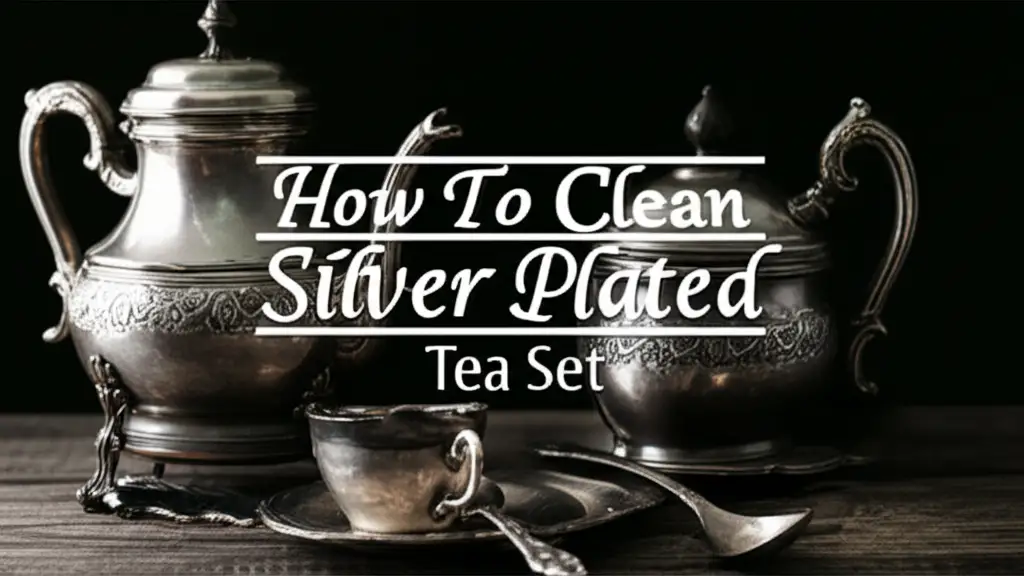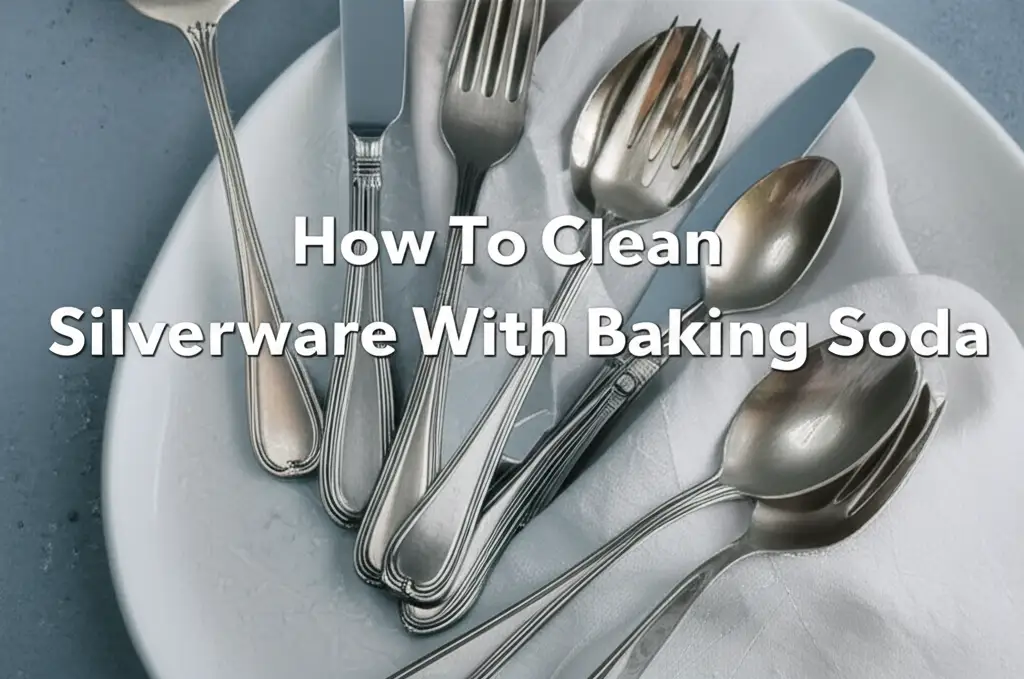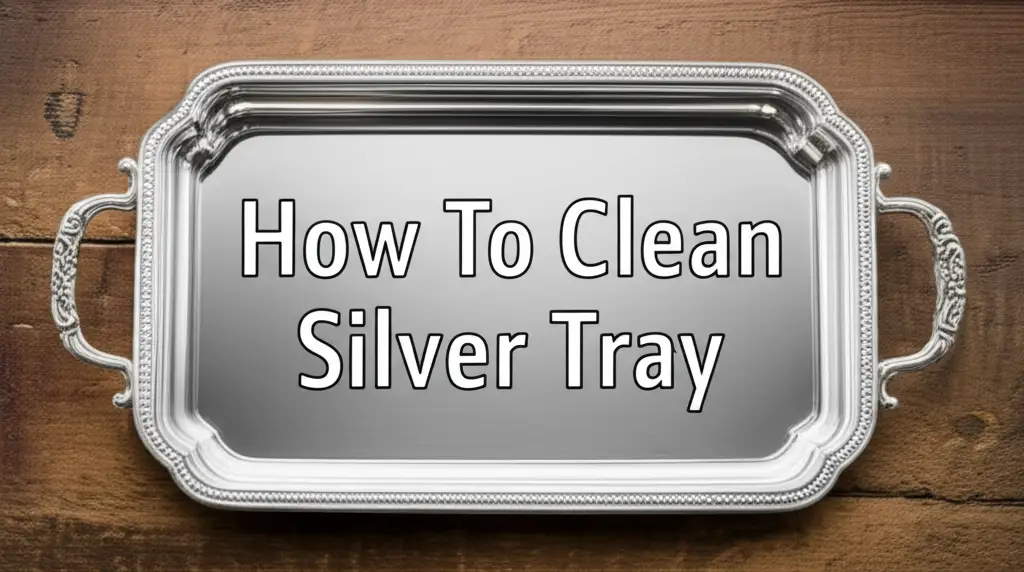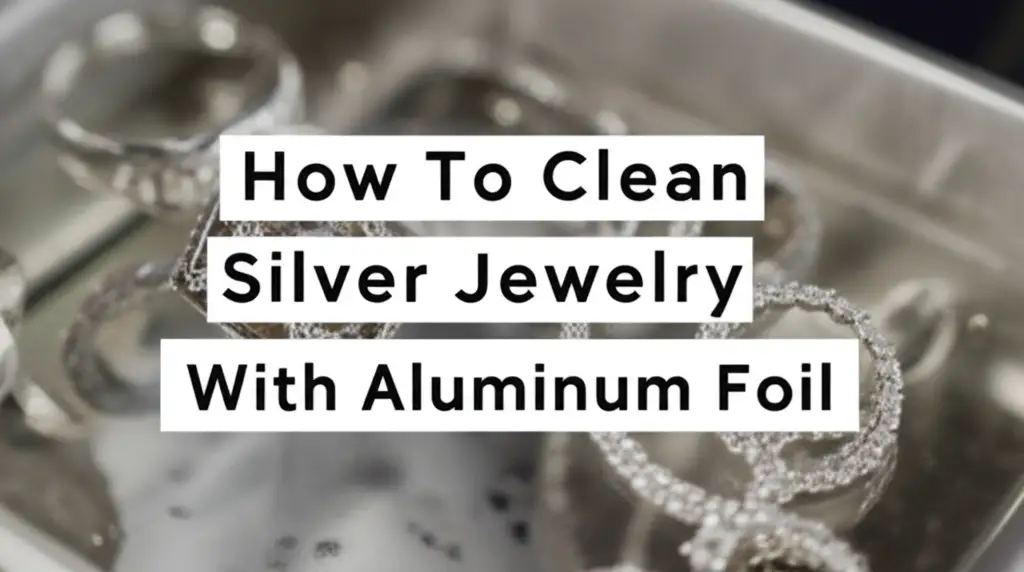· Home Cleaning · 13 min read
How To Clean Silver Utensils
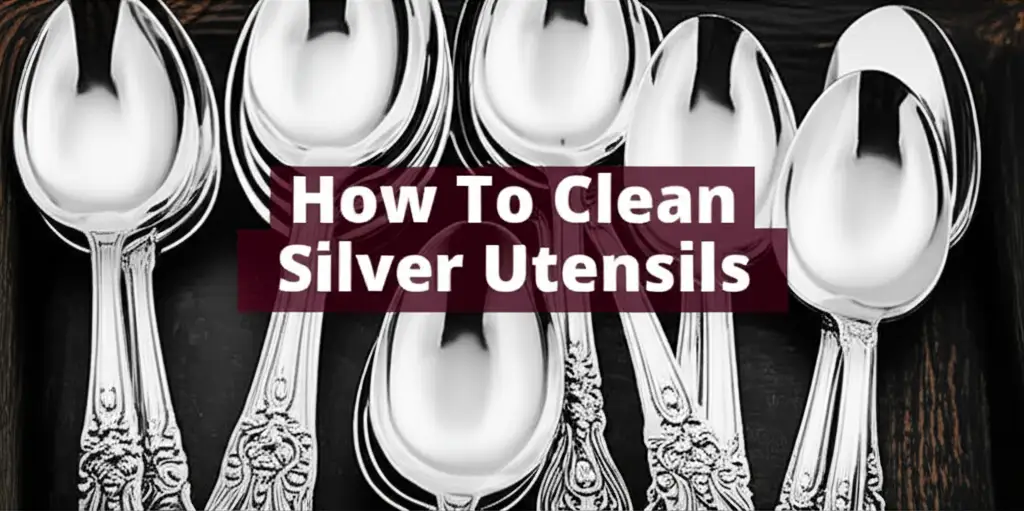
How To Clean Silver Utensils: A Comprehensive Guide
Silver utensils bring elegance to any meal. They are beautiful additions to your dining table. However, silver tarnishes over time. This tarnish can make your beautiful pieces look dull. Learning how to clean silver utensils correctly keeps them sparkling. It also protects their value.
This article provides simple, effective methods for cleaning your silver. We will cover gentle everyday care. We will also discuss powerful solutions for heavy tarnish. I will share tips for preventing tarnish. You will know how to keep your silver looking its best.
Takeaway
- Start with gentle cleaning methods for light tarnish.
- Use household remedies like baking soda and aluminum foil for heavier tarnish.
- Always rinse and dry silver thoroughly after cleaning.
- Store silver correctly to prevent tarnish formation.
- Regular maintenance extends the beauty and life of your silver utensils.
How do you clean silver utensils?
Cleaning silver utensils involves gentle washing for light tarnish or using household solutions like baking soda and aluminum foil for heavier tarnish. Always dry thoroughly and store properly to prevent future discoloration, ensuring your silverware always looks its best.
Understanding Silver Utensils and Tarnish
Silver utensils are lovely heirlooms and functional pieces. They add a touch of class to special occasions and daily meals. Real silver, like sterling silver, is durable. It can last for generations with proper care. However, silver does react with its environment. This reaction causes tarnish.
Tarnish is a natural process. It happens when silver reacts with sulfur compounds in the air. These compounds are present in small amounts everywhere. Foods like eggs, onions, and certain fruits also contain sulfur. Contact with these foods can speed up tarnishing. The reaction creates a thin layer of silver sulfide on the surface. This layer looks dull and dark. It can appear yellow, brown, or even black.
You may own different types of silver utensils. Sterling silver is 92.5% pure silver. The remaining 7.5% is usually copper. This makes the silver stronger. Silver-plated utensils have a thin layer of pure silver over a base metal. Both types of silver can tarnish. The cleaning methods are often similar. However, silver-plated items need extra care. Their silver layer is thin. Aggressive cleaning can wear it away. Knowing the type of silver you have helps you choose the right cleaning method. Maintaining your silver regularly prevents heavy tarnish buildup. It keeps your utensils ready for use. Proper care ensures their lasting beauty.
Gentle Cleaning for Lightly Tarnished Silver Utensils
Light tarnish often appears as a slight dullness or yellow tint. This level of tarnish is easy to remove. Gentle cleaning methods are best for routine maintenance. They are also suitable for silver you use often. This approach helps preserve the silver’s finish. It prevents scratches or damage.
Start with warm water and mild dish soap. Fill a sink or a basin with warm water. Add a few drops of a gentle, phosphate-free dish soap. Submerge your silver utensils in the soapy water. Let them soak for a few minutes. This helps loosen any dirt or grime. Use a soft cloth or sponge to gently wipe each piece. Avoid abrasive scrubbers. They can scratch the silver surface. Pay attention to intricate designs. A soft-bristled brush, like an old toothbrush, can reach crevices. Gently rub away the tarnish and dirt.
After cleaning, rinse the silver thoroughly under warm running water. Ensure all soap residue is gone. Soap residue can dull the silver over time. Drying is a critical step. Use a clean, soft cloth. Microfiber cloths work well. They absorb water without leaving lint. Buff the silver gently as you dry it. This helps prevent water spots. It also brings out the silver’s natural luster. Never let silver air dry. Water spots can form and leave marks. This gentle method is perfect for daily use silver. It keeps your pieces shining without harsh chemicals.
The Baking Soda and Aluminum Foil Method for Deeper Tarnish
When silver utensils show heavy tarnish, a simple wash may not be enough. The baking soda and aluminum foil method is powerful. It uses a chemical reaction to reverse tarnish. This method is also called the “ion exchange” method. It is safe and effective for most silver. It works by converting silver sulfide (the tarnish) back into silver. This process is very satisfying to watch.
First, gather your materials. You will need aluminum foil, baking soda, salt, and hot water. You also need a non-metal container. A glass baking dish or a plastic tub works well. Line the bottom of your container with aluminum foil. Make sure the shiny side of the foil faces up. Place your tarnished silver utensils on top of the foil. Ensure each piece touches the foil.
Next, prepare the solution. For every liter (about 4 cups) of hot water, add one tablespoon of baking soda and one tablespoon of salt. The water should be hot, but not boiling. Pour the hot solution over the silver and foil. Make sure the silver pieces are fully submerged. You will see bubbles forming immediately. A faint rotten egg smell might be present. This is normal. It means the reaction is working. The tarnish should begin to disappear from the silver within minutes. For very heavy tarnish, you may need to let it soak longer. Some pieces might need 10-15 minutes.
Once the tarnish is gone, carefully remove the silver from the solution. Use tongs or gloves if the water is still hot. Rinse each piece thoroughly under cool running water. This removes any residue from the solution. Finally, dry and polish the silver with a soft cloth. I often find this method works wonders for badly tarnished items. For more details on this process, especially for jewelry, you can explore how to clean silver jewelry with aluminum foil or learn how to clean a silver necklace with baking soda. If you are dealing with very dark, stubborn tarnish, these principles also apply to heavily tarnished silver. This method restores shine effectively.
Using Toothpaste for Spot Cleaning Silver Utensils
Toothpaste is a surprisingly effective tool for cleaning silver. It works well for small tarnished spots. It is also good for light, localized tarnish on your utensils. The mild abrasive quality in toothpaste helps remove the tarnish layer. However, you must use the right type of toothpaste. Choose a plain, white paste. Avoid gel toothpastes. Do not use toothpastes with abrasive particles, like whitening or tartar control formulas. These can scratch your silver.
To use toothpaste, apply a small dab directly onto the tarnished area. You need only a pea-sized amount. Use a soft cloth or a cotton ball. Gently rub the toothpaste onto the tarnish. Use small, circular motions. You will see the tarnish start to lift. Keep rubbing until the dark spot disappears. The cloth will often turn dark as it picks up the tarnish.
Once the tarnish is gone, rinse the utensil thoroughly under warm water. Ensure all toothpaste residue is removed. Leftover toothpaste can leave a film. It can also cause new tarnish if not rinsed completely. Dry the silver immediately with a clean, soft cloth. Buff it to a shine. I use this method often for quick touch-ups. It is great when I notice a small spot on a single fork. For more specific applications of this method, you can refer to how to clean sterling silver with toothpaste. Remember, toothpaste is a spot treatment. It is not ideal for heavily tarnished or entire sets of silver.
Vinegar and Baking Soda Solutions for Cleaning Silverware
Vinegar and baking soda are common household items. They are also effective for cleaning silver. This combination creates a gentle fizzing action. This action helps lift tarnish from the silver surface. It is a good alternative if you do not have aluminum foil. This method is especially useful for moderate tarnish. It is gentle enough for regular use.
To create a vinegar and baking soda paste, mix the two ingredients. Start with a few tablespoons of baking soda. Slowly add white vinegar until you form a thick paste. The mixture will fizz and bubble. This is a normal reaction. The paste should be thick enough to cling to the silver. Do not make it too watery.
Apply the paste directly to your silver utensils. Use a soft cloth or a sponge. Gently rub the paste over the tarnished areas. Pay attention to any intricate details. For more stubborn spots, let the paste sit on the silver for a few minutes. About 5-10 minutes is usually enough. The paste works to loosen and lift the tarnish. Do not scrub too hard. This can scratch the silver.
After the paste has worked, rinse the utensils thoroughly. Use warm, clean water. Make sure all paste residue is gone. Any leftover residue can attract dirt or cause dullness. Dry the silver immediately with a clean, soft cloth. Buff it to restore its shine. This method is effective for various silver items. It removes tarnish without harsh chemicals. It is a reliable home remedy for keeping your silver looking great.
Commercial Silver Polishes and Cleaners
Sometimes, you need a more powerful solution. Commercial silver polishes and cleaners are designed for this purpose. They come in various forms. You can find creams, liquids, and dips. Each type has specific instructions for use. Always read the product label carefully before starting. Following the directions ensures safety and effectiveness.
Silver polishing creams work well for moderate to heavy tarnish. Apply a small amount of cream to a soft cloth. Gently rub it onto the silver in small sections. The cloth will turn dark as it removes tarnish. Continue rubbing until the tarnish is gone. Then, use a clean part of the cloth to buff the silver. Rinse the utensil thoroughly afterward. Make sure no cream remains.
Silver dips are liquids. They are often used for heavily tarnished items. You simply dip the silver into the solution for a short time. The tarnish disappears quickly. However, dips can be strong. They may remove the intentionally oxidized areas that give silver pieces depth. Use them sparingly. Never leave silver in a dip for too long. Always rinse thoroughly after using a dip. Many professionals advise caution with dips. They can be harsh on the silver surface.
Polishing cloths are another option. These cloths often have a polishing agent embedded in the fabric. They are great for quick touch-ups and maintaining shine. Use them to gently wipe down your silver after each wash. Always wear gloves when using commercial cleaners. Ensure good ventilation in your work area. Some products contain strong chemicals. Choosing the right commercial product depends on your silver’s condition. It also depends on your comfort level with different cleaning methods.
Preventing Tarnish and Proper Storage for Silver Utensils
Preventing tarnish is easier than removing it. Proper care and storage greatly extend the time between deep cleans. Your silver utensils will stay brighter longer. I always prioritize prevention. It saves time and effort in the long run.
Firstly, rinse your silver utensils immediately after use. Food residue, especially acidic or sulfur-containing foods, speeds up tarnish. Do not let food dry on the silver. A quick rinse removes these harmful agents. Avoid putting silver utensils in the dishwasher. Dishwasher detergents are often abrasive. They contain harsh chemicals. High heat from the dishwasher can also damage silver. It can dull the finish or cause pitting. Always handwash your silver for best results.
Proper storage is key to preventing tarnish. Air contains sulfur, which causes tarnish. Minimizing air exposure protects your silver. Store your clean, dry silver utensils in anti-tarnish bags or cloths. These materials are treated to absorb airborne sulfur. Flannel bags or specialized anti-tarnish rolls are excellent options. You can also use airtight plastic bags. Squeeze out as much air as possible before sealing. Adding a piece of charcoal, silica gel packet, or anti-tarnish strip to the storage area also helps. These items absorb moisture and sulfur.
Avoid storing silver with materials that cause tarnish. Rubber bands, newspaper, and certain types of cardboard can accelerate tarnishing. Their sulfur content is high. Keep silver separate from stainless steel items in storage. A chemical reaction can occur between the two metals. This can lead to a type of stain on the silver. Store your silver in a cool, dry place. Humidity promotes tarnish. By following these simple prevention and storage tips, your silver utensils will remain beautiful and ready for your next elegant meal. Caring for your silver extends its life and beauty for years to come. If you also have silver-plated items, these prevention tips are equally vital, as discussed for items like a silver-plated tea set.
Frequently Asked Questions (FAQ)
Q1: How often should I clean my silver utensils? A1: Clean silver utensils as needed. For frequently used silver, a gentle wash after each use is enough. If you notice dullness or light tarnish, use a mild cleaner. Deep cleaning for heavy tarnish may only be needed every few months or once a year, depending on storage and environment. Regular light cleaning is best for maintenance.
Q2: Can I put silver utensils in the dishwasher? A2: No, you should not put silver utensils in the dishwasher. Dishwasher detergents are too harsh for silver. The high heat can also damage the metal. This can cause scratching, pitting, or dulling. Always handwash your silver utensils with mild soap and warm water for the best results.
Q3: What household items can damage silver? A3: Certain household items can damage silver. These include harsh cleaning chemicals like bleach. Rubber bands and newspaper contain sulfur and can cause tarnish. Foods high in sulfur, like eggs, onions, and mustard, can also tarnish silver if left on the surface. Avoid abrasive scrubbers that can scratch the finish.
Q4: Is it safe to use commercial silver dips on antiques? A4: Use commercial silver dips with caution, especially on antiques. Dips are strong and can remove the dark patina that often gives antique silver its character. They can also be harsh on the silver surface. For valuable or antique pieces, it is generally safer to use gentler polishing creams or the baking soda and foil method.
Q5: How do I remove food stains from silver? A5: Remove food stains from silver promptly with a gentle wash. Use warm water and mild dish soap. For stubborn stains, try a paste of baking soda and a little water. Apply it to the stain, gently rub, then rinse and dry. Avoid abrasive cleaners, which can scratch the silver.
Q6: What is the difference between sterling silver and silver plate when cleaning? A6: Sterling silver is a solid alloy, 92.5% pure silver. Silver plate is a thin layer of silver over a base metal. When cleaning, both tarnish similarly. However, be gentler with silver-plated items. Aggressive rubbing or harsh chemicals can wear away the thin silver layer. The baking soda and foil method is safe for both, as it does not involve abrasion.
Conclusion
Cleaning silver utensils does not need to be a difficult chore. With the right methods, you can easily restore and maintain their beautiful shine. We explored several effective techniques. Gentle soap and water are perfect for light tarnish. The baking soda and aluminum foil method powerfully tackles deeper discoloration. Toothpaste offers a quick solution for spot cleaning. Vinegar and baking soda provide another reliable home remedy. Commercial polishes are available for more stubborn jobs.
Remember, prevention is your best tool. Proper storage in anti-tarnish bags keeps your silver bright. Prompt rinsing after use prevents food-related tarnish. By applying these simple strategies, your silver utensils will remain elegant and radiant for years to come. I encourage you to try these methods. See how easy it is to keep your silverware sparkling. Start today and enjoy the timeless beauty of your polished silver.
- silver cleaning
- utensil care
- tarnish removal

